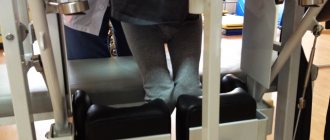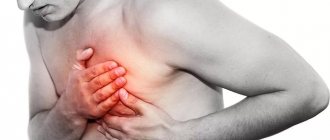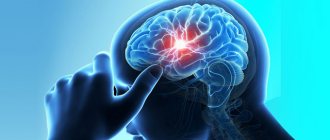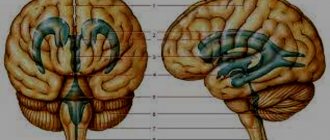Causes of cold sweat
Severe stress
The body’s protective reaction to any stressful situation is the release of hormones from the adrenal medulla (mainly adrenaline). This substance constricts the blood vessels of the skin and activates the sweat glands. A person feels profuse cold sweat, which appears in the form of drops, often in the head area, and sometimes can flow down in streams. This manifestation is typical for severe emotional shocks. Short-term sweating during stress is normal, but when it is combined with dizziness or fainting, medical attention is needed.
Migraine
A person breaks into a cold sweat at the height of a painful attack. In addition to severe headaches, the patient feels lightheaded, weak, and general sweating is observed. Your hands and feet are cold and clammy, and sweat may run down your face and neck. This condition persists throughout the migraine attack and disappears on its own after the pain stops. Severe pain provokes excess production of adrenaline, which causes sweating. Unpleasant symptoms intensify when exposed to light and sound stimuli.
Vegetovascular dystonia (VSD)
This is a common cause of cold sweat, especially in young, emotionally labile patients. A person with VSD reports that bouts of excessive sweating vary in frequency, from several times a month to several times a day. Sweating is provoked by staying in a stuffy room and excitement. Patients note that the symptom is combined with severe weakness, dizziness, and some people feel like they are going to faint. Cold sweat is released throughout the body, the most pronounced sweating is the palms, head, and armpits.
Diabetes
In patients suffering from diabetes, cold sweating most often develops against the background of a decrease in blood glucose levels. Often, the symptom is observed during long breaks between meals or erroneous administration of large amounts of insulin. First, a strong feeling of hunger is felt, then sweat profusely appears on the face and torso, while the limbs are very pale and cold. Increased sweating is sometimes accompanied by motor agitation and a feeling of fear. The condition requires emergency care, as hypoglycemia can progress to coma.
Cardiac pathology
Cold sticky sweat, which is caused by large amounts of stress hormones entering the blood, appears on the skin during myocardial infarction. The symptom appears against a background of sharp chest pain radiating to the shoulder blade or left arm. In addition to pain, severe weakness, coldness of the extremities are felt, and cold sweat appears on the face and body. The patient is very pale, verbal reactions may be inhibited. Sometimes the cause of cold sweat is the development of acute heart failure with a sharp drop in pressure and activation of the sympathetic nervous system.
Bleeding
The loss of a large amount of blood (more than 10% of the total volume) is always accompanied by a violation of the general condition. With external bleeding from large vessels, cold sweat occurs immediately after injury; its appearance is caused by both neurohumoral disorders and strong emotional shock from the sight of blood. With massive internal bleeding, hemorrhages in the abdominal or pleural cavities, sticky sweat, sudden coldness of the skin, and diffuse cyanosis are observed. Excessive blood loss can lead to loss of consciousness.
Infectious diseases
Cold sweats usually occur before going to bed, or the patient wakes up at night with severe chills and notices increased sweating. The development of the symptom is associated with intoxication of the body by particles of bacterial or viral agents, and an increase in body temperature. With some infections, complaints of prolonged perspiration (more than 1 month) and coldness of the extremities are typical. Profuse sweat can be combined with muscle tremors and weakness. Cold sweating is characteristic of diseases such as:
- Bacterial infections
: pneumonia, tuberculosis, sepsis, etc. - Viral processes
: influenza, infectious mononucleosis, hemorrhagic fever (Crimea-Congo, Marburg, Ebola). - Parasitic infestations
: malaria, toxoplasmosis. - HIV infection
.
Withdrawal syndrome
Profuse cold sweats, which are mainly observed at night, occur in people addicted to alcohol and drugs. Perspiration appears 2-3 days after stopping the use of these psychoactive substances. Sometimes the sweating is so severe that the sheets and pillowcases become soaked through, forcing a person suffering from withdrawal symptoms to change their bed linen in the middle of the night. Increased sweating is accompanied by aches and burning throughout the body, weakness, and severe headaches. Characterized by irritability and emotional instability.
Emergency situations
There are many acute conditions that can cause cold sweats. Perspiration always appears with severe damage to internal organs, in which nervous regulation changes and a sharp release of biologically active compounds into the blood occurs. In this case, the skin turns sharply pale, the nasolabial triangle, nails, and fingertips acquire a bluish tint. Sticky sweat appears all over the body. Associated symptoms depend on the cause that provoked the appearance of cold sweat. With profuse sweating and coldness of the extremities occurs:
- Critical conditions
: acute respiratory or liver failure, renal colic. - Gastrointestinal pathology
: peritonitis, strangulated hernia, thrombosis of mesenteric vessels. - Diseases of the pelvic organs
: ovarian apoplexy, tubal pregnancy, uterine perforation. - Neurological disorders
: concussion, subdural or epidural hematomas, stroke.
Rare causes
- Oncological diseases
: lymphogranulomatosis, non-Hodgkin's lymphoma, acute and chronic leukemia. - Idiopathic hyperhidrosis
. - Endocrine pathology
: hypothyroidism, chronic adrenal insufficiency. - Heart rhythm disturbances
: Morgagni-Adams-Stokes syndrome, paroxysmal tachycardia, long QT interval syndrome.
general characteristics
Severe dizziness is a paroxysm lasting from several seconds to several hours, accompanied by the illusion of movement.
During an attack, the patient may feel how he himself rotates or shifts in different planes, although, in fact, there are no changes. Sometimes patients feel as if the stationary environment is shifting. In most cases, severe dizziness is systemic. The symptom can occur for no apparent reason, or be provoked by a change in head position, lack of sleep, loud sounds, or strong emotional experiences. The most common accompanying manifestations are headache, hearing impairment, and palpitations.
Diagnostics
A general practitioner or specialist therapist will determine the factors that cause increased sweating. The main task of the examination is to detect the main cause - pathology, one of the symptoms of which is cold sweat. A diagnostic search involves conducting laboratory and instrumental methods for assessing the general condition of the body and the functioning of individual organs. The following studies are considered the most valuable:
- Cardiac diagnostics
. To exclude cardiac causes of cold sweat, an electrocardiogram is recorded in standard leads. The recording evaluates the voltage of the teeth and the size of the intervals between them. If pathological signs are detected, echocardiography is performed to clarify the diagnosis. - Neurological examination
. A standard study includes checking deep and superficial reflexes, skin dermographism. To exclude vegetative-vascular disorders, the Danini-Aschner phenomenon and an orthostatic test are used. In some situations, recording an electroencephalogram is recommended. - Functional tests
. The methods are used when idiopathic hyperhidrosis is presumably considered as the main cause of cold sweat. The amount of sweating is assessed using evapometry and gravimetry. To measure the area and intensity of hyperhidrosis, the Minor test (iodine-starch test) is performed. - Visualization methods
. During the initial examination of patients with complaints of cold sweat, ultrasound of the abdominal and pelvic organs is informative. If there are concomitant symptoms, an X-ray examination of the chest and abdomen is indicated. Sometimes a CT scan or MRI is prescribed. - Analyzes
. A clinical blood test can detect signs of infectious diseases, which often manifest as cold sweats. A coagulogram is performed in the presence of bleeding. In all cases of the disorder, a biochemical blood test with a proteinogram and fasting glucose measurements are recommended.
The presence of a general infectious syndrome serves as an indication for bacteriological examination and serological tests to identify the type of pathogen (RIF, ELISA, PCR). With prolonged increased sweating, it is necessary to determine the concentration of insulin, thyroid hormones and adrenal cortex. Other specialists (endocrinologist, phthisiatrician, oncologist) may be involved in examining patients with cold sweat.
Prevention
You need to take care of your health and not put yourself through long-term treatment. Following simple rules will help you avoid many unpleasant conditions:
- good sleep;
- quitting smoking and alcoholic beverages;
- physical activity;
- fresh air in the bedroom;
- no stress;
- limit coffee consumption.
Even in the presence of serious pathologies, sweating and dizziness can be weakened and even completely eliminated. The main thing is to avoid excessive stress, eat well and develop the right daily routine.
Treatment
Help before diagnosis
Cold sweat can be a sign of various diseases, so only a doctor can determine the exact causes of unpleasant symptoms. Until the cause of sweating is determined, it is recommended to regularly take a hygienic shower and change bed linen more often. For severe sweating, sedatives are used to normalize the functioning of the nervous system. If cold sweat occurs against the background of severe weakness or dizziness, the patient needs to be seated, air access must be provided, and in case of fainting, ammonia should be given to sniff.
First aid for critical conditions
Conservative therapy
Medical tactics depend on the main cause of excessive sweating. In critical conditions, resuscitation measures, oxygen support and the administration of infusion glucose-saline solutions are required. In case of satisfactory condition, drug therapy is carried out. Cold sweat caused by autonomic dysfunction is treated using physiotherapeutic methods and psychotherapy. The treatment regimen may include the following groups of drugs:
- Sedatives
. The remedies are effective when cold sweat is associated with disorders of the nervous system. Both herbal and synthetic medicines are used. In difficult situations, they resort to “daytime” tranquilizers. - Analgesics
. The occurrence of cold sticky sweat associated with pain requires the prescription of non-narcotic painkillers. For severe pain and traumatic shock, opioid analgesics are used. - Antibacterial drugs
. Medicines help eliminate sweating associated with infectious diseases. For tuberculosis, specific long-term treatment regimens are used with combinations of several anti-tuberculosis drugs. - Thrombolytics
. The drugs are prescribed to patients with myocardial infarction, which causes cold sweat. They allow you to restore blood supply to the heart muscle and significantly shorten the period of convalescence.
Eliminating symptoms
Knowing the reasons that caused them will help you get rid of symptoms such as dizziness and increased sweating:
- if the matter is poisoning, first of all, you need to remove the substances that caused the intoxication from the body. In this case, absorbents and a large amount of clean water are used. Activated charcoal helps cope with this disorder perfectly. Modern drugs have also appeared: Enterosgel, Eubicor. Taken strictly according to instructions. The medications are absolutely safe and are indicated even for children;
- if the unpleasant condition is caused by an allergic reaction, then antihistamines are added to the absorbents. The newest antiallergic drugs instantly relieve an attack and do not cause drowsiness;
- infections and viruses that cause such symptoms are treated as prescribed by the doctor. Dizziness and sweating require longer treatment, and this can only be determined by a doctor;
- if you feel dizzy and sweaty due to problems with blood pressure, then such phenomena should not be ignored. You should take appropriate medications, drink water with lemon, and rest well.
If simple measures to eliminate the malaise are ineffective and dizziness persists with sweat, then you can no longer do without the help of a therapist. The nearest clinic will conduct an examination and prescribe the necessary treatment.









